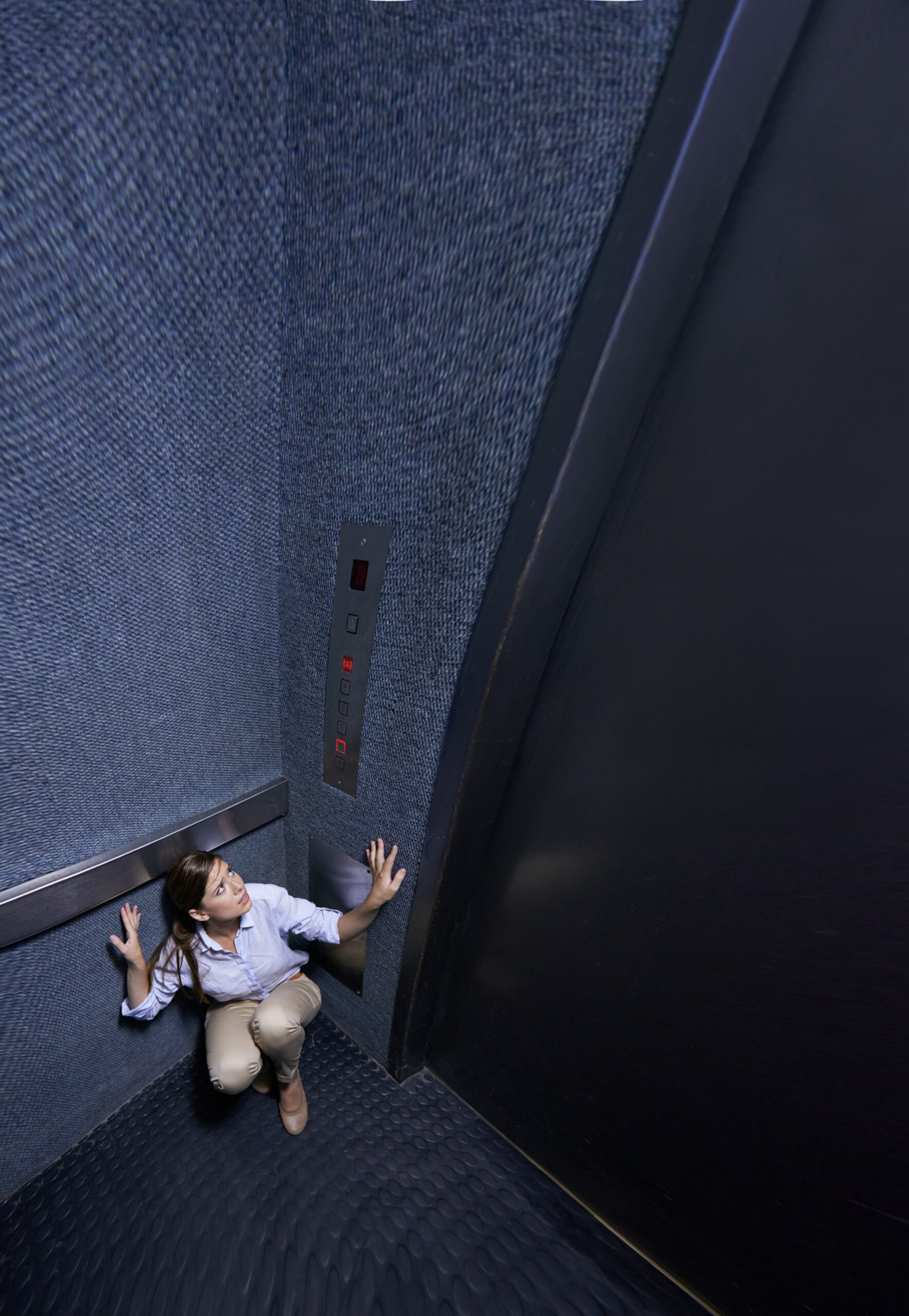Claustrophobia is a common fear that impacts numerous lives around the world. Imagine being inside a cramped space, feeling stuck, and suddenly feeling panic rise. This major discomfort is more than just unease; many people experience this gripping fear daily. Recognizing how claustrophobia affects people can lead to better understanding and support. In this blog, we’ll talk about what causes claustrophobia and how to manage its symptoms effectively
To create a kind society, we must understand how claustrophobia works. This isn’t just about slight fear but rather a strong response to tight spaces. It could lead someone to avoid certain places, affecting their work and home life. Awareness helps create environments where people feel understood and supported. By changing how we view phobias like claustrophobia, we make room for better mental health conversations and practices.
Defining Claustrophobia and its Impact on Mental Health
Claustrophobia is when people fear being stuck in tight spaces. It’s an anxiety disorder different from agoraphobia, which involves fearing open spaces or crowds. With claustrophobia, the fear is about feeling trapped with no way out. Understanding these differences helps grasp how it appears in everyday life.
Living with claustrophobia can harm one’s mental health significantly. This ongoing fear causes stress, which may spiral into a cycle of panic and avoidance behaviors. Over time, this might lead to other issues like depression because it hampers daily life and relationships. Addressing claustrophobia involves not just symptom management but maintaining emotional balance too.
Over a person’s lifetime, 5-10% may face claustrophobia challenges. It usually emerges in childhood or teenage years but can also arise in adults after some trauma. These statistics emphasize the need for early discovery and active intervention to avoid severe emotional consequences.
Identifying Triggers and Symptoms of Claustrophobia
You might experience claustrophobia in numerous everyday situations. Elevators, tunnels, and small bathrooms are usual suspects around us. Large crowds or public transport can also ignite those strong feelings. People often feel trapped and out of control in these places.
Claustrophobia brings a range of physical and emotional challenges that differ for each person. You may feel your heart pounding, sweat forming, or your breath growing shallow. Emotionally, thoughts of doom might grip you unexpectedly. In extreme cases, these can spiral into panic attacks. Knowing how these symptoms manifest can help people handle them better.
Someone might remember entering an elevator crowded with strangers, anxiety building intensely fast. Others could share moments trapped in a windowless room at social events, causing similar dread. These stories of claustrophobia open a door to empathy, allowing us to better understand our own fears.
Exploring Underlying Causes and Contributing Factors
The advent of claustrophobia may stem from linked genetic, psychological, and environmental influences. A family history of anxiety can heighten an individual’s chance to develop claustrophobia. Similarly, bad past experiences or learned behaviors relating to enclosed spaces might trigger this phobia. Growing up in tightly packed cities might worsen feelings of entrapment.
Research suggests that brain mechanisms might influence claustrophobia’s onset. The amygdala, which deals with fear, might overreact to small spaces. Child trauma, like being trapped or confined, might increase the likelihood of claustrophobia in later life. These insights stress the importance of understanding what’s causing this condition.
Each person’s journey with claustrophobia is a unique mix of factors. It’s key to consider various sides of one’s experience and using self-reflection to grasp personal triggers and fears. Acknowledging individuality can aid in starting a path toward healing and self-awareness.
The Interplay Between Claustrophobia and Other Phobias
Claustrophobia often doesn’t occur by itself and can be linked to other issues, such as anxiety or depression. Feeling trapped amplifies fears you might already have. Getting scared about enclosed spots can make other worries worse.
Finding solutions means looking at everything affecting your mind together. Using therapy and relaxation helps tackle fears more effectively. It’s better to treat phobias as connected, not in separate boxes.
Dealing with claustrophobia involves more than just calming one fear down. It’s about managing how it ties into other parts of life. Understanding these links helps everyone feel better in the long run. This approach creates peace across different areas in life, making things more balanced for the individual.
Impact on Day-to-Day Life: Recognizing Avoidance Behaviors
Claustrophobia triggers people to avoid things like enclosed places. This can make everyday life really hard and limit what one can do. For example, skipping elevators means always using the stairs, which limits where you can go. Avoiding buses or trains can make getting to work harder or mess up travel plans. Over time, these habits add up and cut down your personal experiences and growth.
Skirting things due to claustrophobia can mess with relationships and how life feels. Missing events in small spaces may mean you see less of friends. At work, this fear might make tasks tough or harm teamwork and promotions. The ripple from this fear goes beyond the person, affecting personal ties too.
Often, people with claustrophobia know their fears don’t make sense but feel stuck. Knowing these fears only adds stress and inner battles. Even with this self-awareness, a cycle of avoiding stays. Helping them tackle fears is key for gaining back freedom and confidence. Learning ways to cope builds strength and faith in handling them.
Coping Strategies and Self-Help Techniques
Managing symptoms of claustrophobia involves using practical self-help methods. A good way to start is through controlled breath techniques, which settle the mind and lessen panic levels. Visualization, paired with rhythmic breathing, can ease anxiety. Gradual exposure therapy, which involves engaging in gradual activities, helps to empower individuals. This method lets you face fears slowly instead of avoiding all risks.
Participating in mindfulness practices can improve your ability to focus on the moment, reducing fear-fueled distractions. Meditative exercises direct attention to breaths and surroundings, bringing calmness. Cognitive reframing opens new viewpoints on stressors, questioning unsupported fear patterns. By working these mental shifts, sufferers can separate conditioned responses from threats, enhancing clarity.
Being prepared helps face claustrophobic situations with greater ease. By understanding potential triggers, individuals can plan ahead. Creating a series of relaxed steps when in limited spaces ensures challenges feel doable rather than overwhelming. With these tactics in mind, gradual control of anxiety is possible, allowing avoidance to decrease while confidence grows. This systematic approach aids in moving from worry to acceptance, opening up possibilities for partaking in life’s moments fully.
When Professional Treatment Becomes Necessary
Recognizing the compelling need for professional intervention for claustrophobia can significantly change a person’s life for the better. When fear makes daily life difficult, it’s time to seek help. Avoiding elevators, subways, or enclosed places might mean claustrophobia symptoms are impacting one’s life and emotions.
Managing claustrophobia involves various treatment methods. Cognitive-behavioral therapy (CBT) helps shift negative thoughts about small spaces into positive ones. Over time, this approach can reduce fear and stop anxiety patterns. Pairing CBT with exposure therapy, where people gradually enter confined spaces, can reduce their reaction to these triggers. For those with severe anxiety, doctors might prescribe medication to bring calmness, allowing therapy to move forward.
Finding a therapist skilled in phobias, especially in claustrophobia therapy, is vital for effective treatment. Expert therapists adjust their methods based on your response, providing a supportive environment crucial for recovery. Working with a seasoned professional increases the chance of overcoming claustrophobia completely.
Building a Support System and Societal Understanding
Open chats with people you trust can be truly supportive. Friends, family, and coworkers who get claustrophobia help when things get tough.
Society needs clear knowledge about phobias to develop empathy. Speak up against myths like confusing claustrophobia with agoraphobia to create understanding. It’s all about changing views and encouraging kindness.
Today, there are so many resources for those seeking mental well-being. Joining support groups can provide comfort and a sense of community. These spaces nurture shared experiences, which can be really empowering for someone tackling claustrophobia treatment alone.
Empowering Individuals Towards Recovery and Wellness
Recovery from claustrophobia is possible with the right strategies and support.
Start by understanding and managing your claustrophobia symptoms effectively each day. Practice deep breathing and focus on grounding techniques for calm. Gradual exposure to triggering situations helps build strength and control.
Remember, if you’re dealing with claustrophobia, you’re never alone. Professional guidance and community support are steps toward wellness. Embrace these steps and know that recovery is achievable with shared experiences easing the path.

